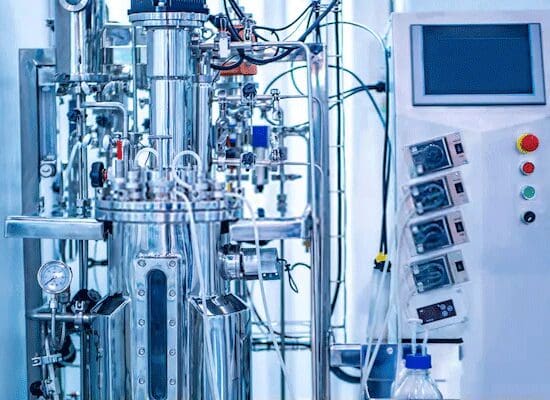
In recent years, the increase in the number of multi-drug resistant pathogens and food safety have become serious global problems, and it is increasingly important to find or develop a new generation of antibacterial drugs or preservatives. Scientists have discovered that bacteria-produced bacteriocins can control clinically relevant susceptible and resistant bacteria, and purified bacteriocins can be added to foods as natural preservatives. Bacteriocins can be added to animal feeds as anti-pathogen additives to protect livestock from pathogen damage. In medicine, bacteriocin has the potential to replace antibiotics as antibacterial drugs and is a new type of anticancer drug.
What’s Bacteriocin?
Bacteriocins are small, thermostable, ribosomally synthesized antimicrobial peptides produced by bacteria that are active against other bacteria and to which the producer is immune. They exhibit considerable diversity in size, structure, mechanism of action, inhibitory profile, immune mechanism, and target cell receptors.
They exhibit antimicrobial activity against the same bacterial strain from which they are produced or against strains of closely related species. The synthesis of bacteriocin takes place under the control of genes located in plasmid or chromosomal DNA that simultaneously contain the genetic determinants of the resistance of the producer to the produced bacteriocin.
Genes encoding active proteins, genes encoding protein resistance, genes responsible for export of bacteriocin from cells, and occasionally genes encoding enzymes involved in post-translational modification of bacteriocin were expressed simultaneously.
Bacteriocins are composed of Gram-positive bacteria (Lactobacillus, Lactococcus, Streptococcus, Enterococcus, Leuconostoc, Pediococcus, and Propionibacterium) and Gram-negative bacteria (Escherichia coli, Shigella, Serratia bacteria, Klebsiella, and Pseudomonas).
“Bacteriocin” refers to a toxic protein or peptide produced by any type of bacteria that is active against the related bacteria but does not harm the producing cells. This is the first described bacteriocin produced by E. coli. In this case, the suffix cin is added to the production species, e.g., pyocins are from Pseudomonas pyocyanea. Genus names are also used to name bacteria, such as klebicins (from Klebsiella), lactococcins (from Lactococcus). Although bacteriocins are toxic to bacteria, they should not be confused with “toxins” (exotoxins).
Enterobactin, the first bacteriocin to be identified, was named by discoverer André Gratia in 1925 when he noticed that a strain of E. coli produced a toxic diffusible substance that killed neighboring E. coli.
Since then, hundreds of peptides and protein bacteriocins have been described that are part of a diverse library of natural antimicrobial compounds made by Gram-negative and Gram-positive bacteria to ward off competitors. In keeping with the origins of bacteriocin research, colistin remains the most studied, especially in terms of how bacteriocins disrupt the bacteria’s powerful defense mechanisms.
Colicins kill cells through a variety of mechanisms, which fall into two cytotoxic categories; enzymatic colicins cleaves nucleic acid or peptidoglycan precursors, while pore-forming colistins depolarize the cytoplasmic membrane.
Characteristics of Bacteriocins
In complex and overcrowded environments, microbes tenaciously compete with each other for territory and nutrients, thus developing a plethora of defense mechanisms. Among them, bacteriocin is considered to be the most widely distributed mechanism at present. By definition, bacteriocins are secreted, ribosomally synthesized peptides of prokaryotic origin with antimicrobial properties.
From a human health perspective, bacteriocins represent a library of potential lead compounds honed by 3 billion years of evolution. Their narrow target range, high activity, surprising stability, and low toxicity make them viable alternatives or complements to existing small-molecule antibiotics. They use these powerful weapons to thrive in microbial warfare. To complete this arsenal, bacteriocin-producing strains are given effective strategies to evade being killed by their own toxins. Most bacteriocins are active in the picomolar or nanomolar range and target bacterial species that are phylogenetically close to the production strain, although some bacteriocins exhibit a broader spectrum of activity.
In fact, many bacteriocins, for example, have a narrow spectrum of activity, exhibiting antimicrobial activity against strains closely related to the producer, while others exhibit antimicrobial activity against a variety of different genera. Regulation of bacteriocin production can be complex and, in some cases, influenced by environmental conditions such as pH, temperature, and growth media.
Bacteriocins are strong candidates for use as future therapeutics. Recent studies have shown that bacteriocins have exemplary antibacterial activity in vitro. Nonetheless, the next step in developing new bacteriocin-based therapeutics involves the use of in vivo models. The antibacterial and/or toxic effects of bacteriocins have been studied in mouse models and the latest alternative animal models, such as drosophila, zebrafish embryos, roundworms, wax moths or brine shrimp. These results suggest that bacteriocins can exert multiple positive responses in the host, such as altered immunogenic responses, altered inflammatory responses, and reduced infection-related biochemical and histopathological parameters. On the other hand, 20% of studies conducted in surrogate models assessed antibacterial activity but did not report toxicity. These data demonstrate that bacteriocin lacks an in vivo model for toxicity and biosafety studies, which are critical for advancing clinical trials.
Collected by Creative BioMart Microbe that provides customers with a one-stop service for bacteriocin production, from the optimization of production parameters to the purification of bacteriocins and the determination of antibacterial activity.